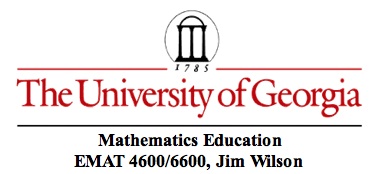

Given two fixed points A and B. Take a random point X and construct two isosceles right triangles XAY and XBZ such that the right angles are at A and B, and the two right angles are in opposite orientation -- one representing a clockwise 90 degree turn and the other and counterclockwise 90 degree turn.
What is the locus of the midpoint of the segment YZ as X is moved in a circle? along a line segment? along other paths? Construct a GSP sketch and experiment.
Prove the obvious conjecture.
Click here to activate a GSP sketch for this description.
Would you like a hint for finding a proof?
Find a solution using Euclidean geometry. See Hint above for proving the conjecture.
Find a solution using coordinate geometry.
(Hint: Let AB be the line of the x-axis with the origin at the midpoint.)
Find a solution using complex numbers.
Find a solution using vector algebra.
Other explorations.
Explore the locus of Y and Z as X is moved in the plane.
Explore the situation if the two isosceles triangles XAY and XBZ are oriented in the same way:
Treasure map
In 1948, George Gamow wrote a book called One, Two, Three, . . . Infinity. In it, he presents a problem suggested by a treasure map found in a grandfanther's attic. The map shows a desert island with a gallows, an Elm tree, and an Oak tree. One is to begin at the gallows and walk to the Oak tree, counting paces. Then turn right 90 degrees and walk from the Oak tree the same number of paces. There one drives a spike. Returning to the gallows, the same procedure is followed in walking to the Elm tree, but turn left 90 degrees and after walking the number of paces as from the gallows to the Elm, drive a second spike. The treasure is buried at the midpoint of a string stretched between the two spikes.
Of course, when the treasure hunters go to the island, they found that the gallows was no longer there and not being mathematicians they randomly dug aound the island without finding the treasure.
Gamow showed how complex numbers represented in the coordinate plane could be used to locate the treasure.
Also, see Island Treasure.